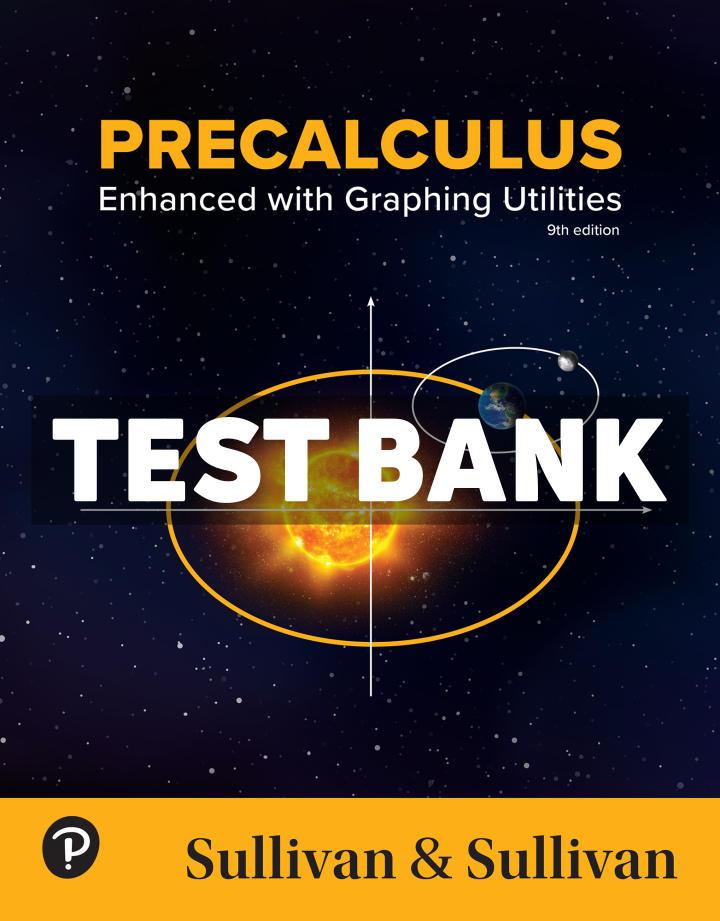
Learning Objectives:


Learning Objectives:
Graphing Utilities; Introduction to Graphing Equations
1. Graph Equations by Plotting Points
2. Graph Equations Using a Graphing Utility
3. Use a Graphing Utility to Create Tables
4. Find Intercepts from a Graph
5. Use a Graphing Utility to Approximate Intercepts
Examples:
1. The graph of an equation is given. List the intercepts of the graph.
2. Graph 2356 xy−= using a graphing utility.
3. Tell whether the given points are on the graph of the equation 2 1 yx=−+ . (a) () 1,2 (b) () 3,8
4. If the point (2,5) is shifted 3 units left and 2 units up, what are its new coordinates?
Teaching Note:
• Emphasize with students that they can select any value to substitute for x when graphing, which is particularly helpful when graphing equations that contain fractions.
• To help students understand rectangular viewing windows, show the same equation in different windows.
• Using the graphing utility, show students how to graph an equation that is not solved for y
• Using the graphing utility, show students how to create a table. Emphasize that a table can help them determine an appropriate viewing window.
• Using the graphing utility, show students how to approximate the intercepts of the graph of an equation.
Answers:
1. x-intercepts are 2 , 0 , and 2 ; y-intercept is 0 2.
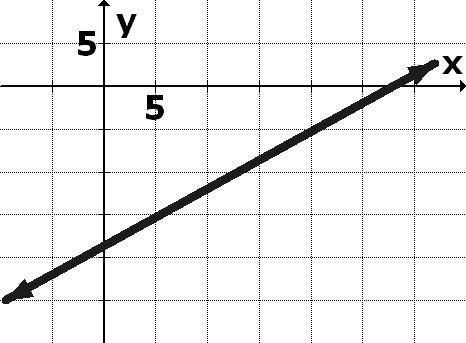
3. (a) no (b) yes 4. () 5,7
Learning Objectives:
1. Use the Distance Formula
2. Use the Midpoint Formula
Examples:
1. Find the distance between the points () 3,7 and () 4,10 .
2. Determine whether the triangle formed by points () 2,2 A =− , () 2,1 B =− , and () 5,4 C = form a right triangle.
3. Find the midpoint of the line segment joining the points () 1 6,3 P =− and () 2 4,2 P =
Teaching Notes:
• Go over the terms used in introducing the rectangular coordinate system.
• Tell the students that the distance formula will be used in several applications later in the course.
• Most students don’t have too much trouble with the distance formula, but they will make careless arithmetic mistakes such as using addition instead of subtraction.
• Go over simplifying radicals and adding the values under the radical prior to taking the square root.
• The midpoint formula is also fairly easy for students, but they will sometimes have difficulty if the coordinates include fractions.
Answers:
Intercepts; Symmetry; Graphing Key Equations
Learning Objectives:
1. Find Intercepts Algebraically from an Equation
2. Test for an Equation for Symmetry with Respect to the x axis, the y axis, and the Origin
3. Know How to Graph Key Equations
Examples:
1. Find the intercepts of the equation 21yx=− and then graph by plotting points.
2. List the intercepts, test for symmetry, and graph each equation.
3. If (,6) a is a point on the graph of 2 yxx =− , what is a?
Teaching Notes:
• Emphasize the graphing of the key functions. It is important that they know the basic shapes of these graphs when this topic is revisited later in the course.
• Encourage students to find the intercepts and to test for symmetry before beginning to graph.
• Emphasize “Procedure for Finding Intercepts” in the book.
• Emphasize “Tests for Symmetry” in the book.
• When testing for symmetry, remind students that a negative number raised to an even power is positive and a negative number raised to an odd power is negative.
Answers:
1. (1/2,0) , (0.1)

2. (b) (0,0) Symmetric with respect to the origin

2. (a) (0,2),(0,2),(4,0) Symmetric with respect to the x-axis.
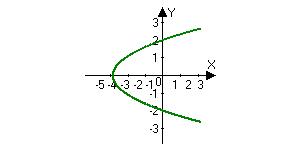
Solving Equations Using a Graphing Utility
Learning Objectives:
1. Solve Equations Using a Graphing Utility
Examples:
Solve each equation algebraically. Verify your results using a graphing utility.
1. ()
2.
3. Use a graphing utility to approximate the real solutions, if any, of the equations and round to two decimal places.
432380 xxxx−−+−=
Teaching Notes:
• Refer students to “Steps for Approximating Solutions of Equations Using ZERO (or ROOT)” in the textbook.
• Remind students about the order of operations. For example, () 5243(4) xx −+≠+ .
• Review finding the least common multiple.
• Remind students when multiplying through by the LCM to multiply every term on both sides of the equation. When one of the terms is an integer, many students will forget to multiply that term by the LCM.
• Encourage students to find the domain before attempting to solve the rational equation. This may remind them to look for extraneous solutions.
• Solve the same example algebraically and then by using the graphing utility. Emphasize the difference in the form of the equation when the graphing utility is used.
• Many times when solving a formula for a variable inside parentheses, students will divide rather than using the distributive property first. It is helpful to show the solution by both methods so that students can see the differences in the two forms of the answer.
Copyright © 2026 Pearson Education, Inc.
Answers:
1. (a) {} 0 (b) {} 5 (c) 46 5
2. (a) {} 11 (b) No solution (c) {} 3
3. {} 1.93,2.53
Copyright © 2026 Pearson Education, Inc.
1. Calculate and Interpret the Slope of a Line
2. Graph Lines Given a Point and a Slope
3. Find the Equation of a Vertical Line
4. Use the Point-Slope Form of a Line; Identify Horizontal Lines
5. Use the Slope-Intercept Form of a Line
6. Find an Equation of a Line Given Two Points
7. Graph Lines Written in General Form Using Intercepts
8. Find Equations of Parallel Lines
9. Find Equations of Perpendicular Lines
Examples:
1. Determine the slope of the line containing the points () 5,4 , () 0,7 .
2. Graph the line containing the point () 2,4 with slope 2 3 m =−
3. Write an equation of the line satisfying the given conditions:
a) Slope 3 4 = , containing the point () 2,4
b) Containing the points () 4,2 and () 3,4
c) x -intercept 3 = , y -intercept 2=−
d) Vertical line containing () 5,1
e) Parallel to the line 345 xy−= and containing the point () 3,6
f) Perpendicular to the line 237 xy+= and containing the point () 1,1
4. Find the slope and y-intercept of the line 463 xy−=− .
5. Find the intercepts and graph the line 24 xy −+=
Teaching Notes:
• Emphasizing that the definition of the slope is “the change in y over the change in x ” will help students remember the formula for the slope.
• Showing the students how to derive the point-slope formula from the slope formula will help students remember the point-slope form.
• Emphasize care with signs when using both the slope formula and the point-slope formula.
• When using the slope and y -intercept to graph a linear function, encourage students to count down and to the right when the slope is negative. Consistency will help students successfully graph all lines.
• Emphasize the slopes and equations of horizontal and vertical lines.
• Use the graphing utility and graph several lines on the same square screen. This will help students see the role that the slope plays in graphing lines.
• Emphasize the relationship between the slopes of parallel lines and perpendicular lines.
Answers:
m ==

5. x -intercept 2=− , y -intercept 4 =
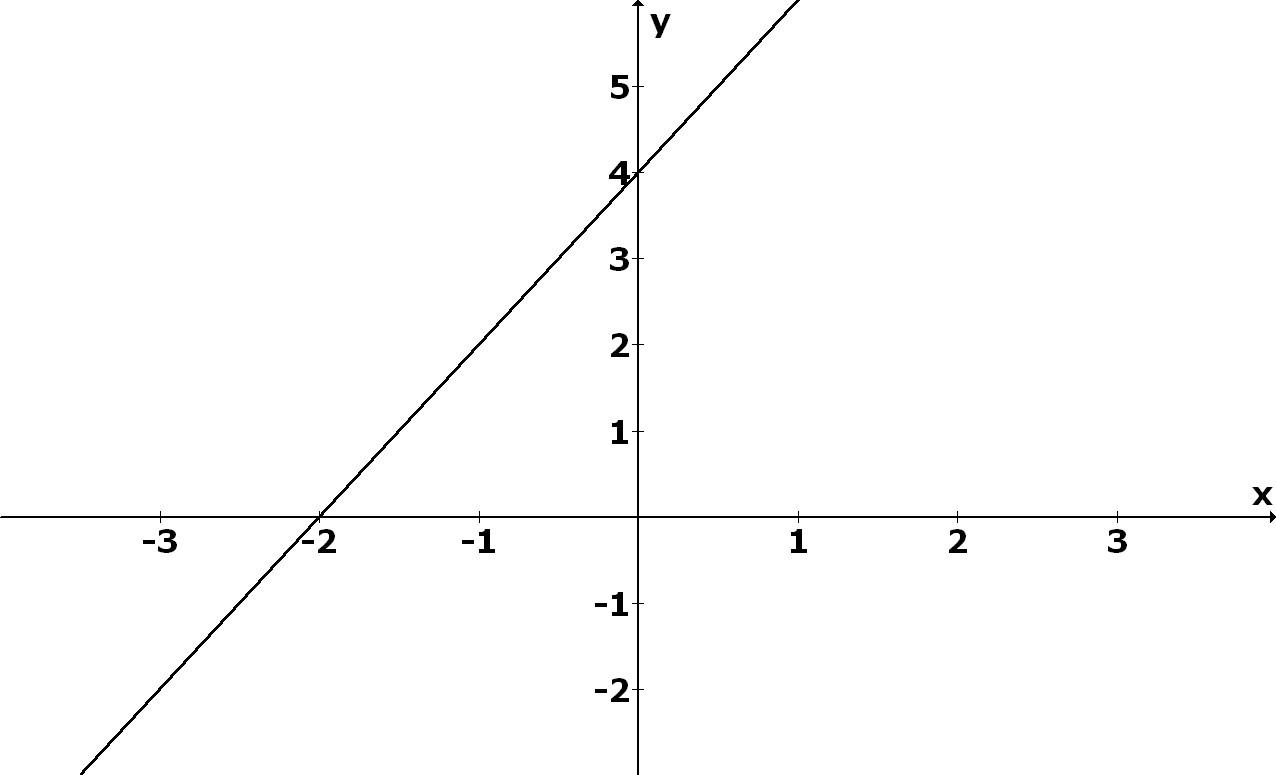
Copyright © 2026 Pearson Education, Inc.
Learning Objectives:
1. Write the Standard Form of the Equation of a Circle
2. Graph a Circle by Hand and by Using a Graphing Calculator
3. Work with the General Form of the Equation of a Circle
Examples:
1. Write the standard form and general form of the equation of each circle with radius r and center () , hk . Graph each circle.
a) ()() 3;,2,3rhk==− b) ()() 2 ;,0,0 3 rhk==
2. Find the center () , hk and radius r of each circle.
a) ()() 22 22238 xy−++= b) 22 6240xyxy+−++=
3. Find the general form of the equation of each circle.
a) Center () 2,3 and containing the point () 0,4 b) Endpoints of a diameter at () 6,10 and () 4,4
Teaching Notes:
• Emphasize taking the opposite signs of those in the parentheses when finding the center of a circle.
• Some students will not recognize that a circle of the form 222 xyr += has the origin as its center. Show them this form written as ()() 22 2 00 xyr −+−= .
• Many students will forget to add the same numbers to both sides of the equation when completing the squares in the equation of a circle.
• Emphasize the difference between the standard form of the equation of a circle and the general form.
• Have students review the method of completing the square.
Answers:
1. a) ()() 22 22 239;4640 xyxyxy ++−=++−+= b) 222244;0 99xyxy+=+−=

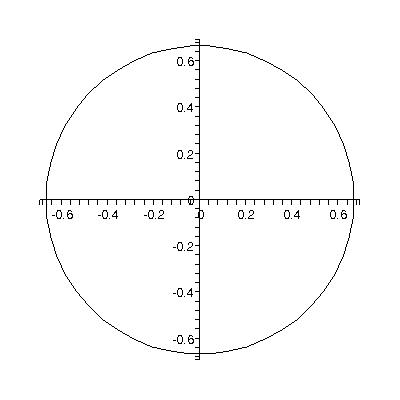
2. a) ()2,3;2cr=−= b) ()3,1;6cr=−=
3. a) ()() 22 2353xy−++= b) ()() 22 1374xy−+−=